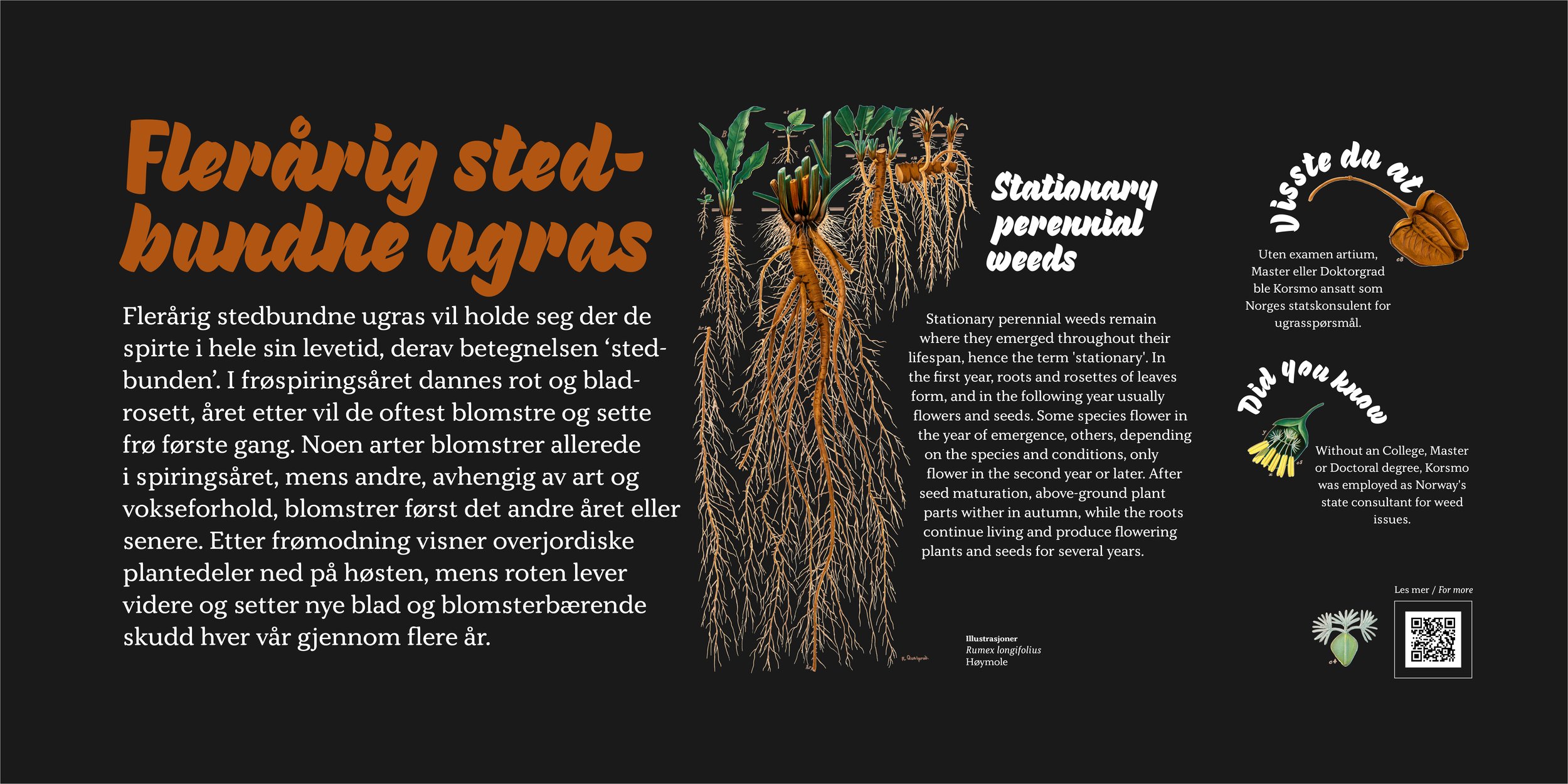Korsmos ugrashage
Didactic garden signs
Korsmos Ugrashage (Korsmo’s garden of weeds) is a garden of weeds, rooted in the legacy of Emil Korsmo, a Norwegian agronomist and botanist, pioneer of weed research.
Here students and the general public can come to learn more about Emil Korsmo and how he worked to systematise weeds.
The garden is adorned with 63 different weed species. It's a collaborative project between the Norwegian University of Life Sciences, the Norwegian Institute of Bioeconomy Research, and the science and experience centre Vitenparken at Campus Ås.

As part of the team, from Vitenparken, my responsibility, was in the graphic design of seven didactic signs, welcoming and orienting visitors, in the garden and in each plant bed.
The garden signs
Visual concept
The idea behind the visual signs was to give the audience a feeling of entering into Emil Korsmo’s world – the world of weeds. It may not come as a surprise that many weeds have an enormous capability to produce seeds and to spread.
The aim was to create modern and engaging signs, that inform and trigger curiosity to learn about Emil Korsmo and his vast scientific and research work on weeds.
The welcome sign presents Emil Korsmo surrounded by his weeds. One of the characteristics of weed plants is that they have an enormous capability to spread organically. They are incredibly flexible and can thrive almost anywhere!
The illustrations used in the signs come from Korsmo’s weed charts from the 1930’s. Artists Knut Quelprud, Sara Mørk, and Liv Barstad drew the weeds. Did you notice the roots of the weed plants in the drawings?
In the welcome sign above, we can see the intricate roots of one plant spreading towards the image of Emil Korsmo and to the text. One of the characteristics of these weed charts are that the roots were drawn as well as the aboveground elements of the plants.
The signs use two different typefaces. A combination of the modern and the old – a new garden based on the old. A modern organic, hand-written typeface for the titles, and an older serif typeface for the body of text as seen on Korsmo's weed charts.
One of Korsmo’s famous weed charts can be seen on the right-hand side of the sign above.
In this project, I worked closely with Elise Malik, communication adviser at Vitenparken, and with Ingebord Klingen, Erling Floistad, and Lars Olav Brandsæter from NIBIO, and with landscape architect Joel Hordin from NMBU.
Learn more about the garden of weeds, Korsmos Ugrashage, on the NIBIO website (in Norwegian) ↪︎ here
lllustrations: collected from Korsmos weed plates, made by the artists Knut Quelprud, Sara Mørk and Liv Barstad; Texts: Elise Malik, Ingebord Klingen, Erling Floistad, and Lars Olav Brandsæter; Physical sign and garden design: Joel Hordin, NMBU; Graphic design: Raquel Maia Marques; Size of each sign: 1000 mm x 500 mm; Typography in use: Kopius and Pique; Print: digital print; Year: 2023.









